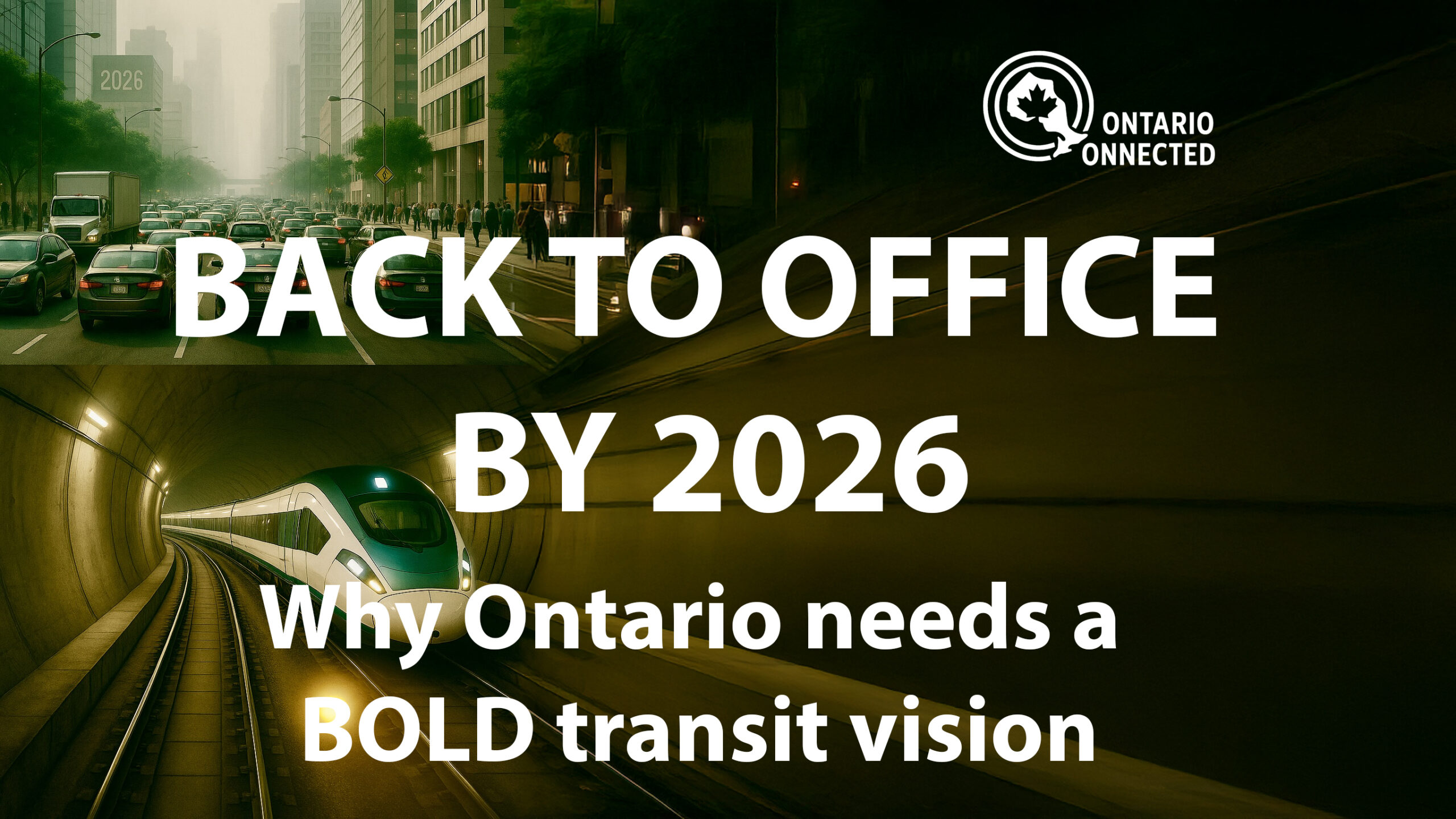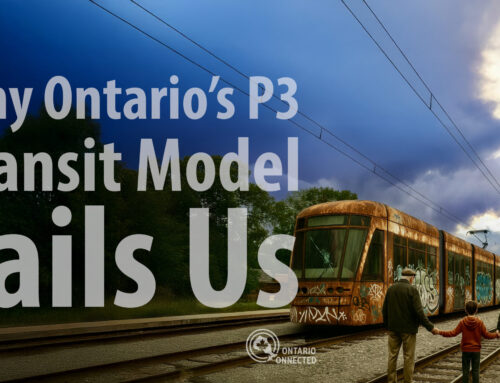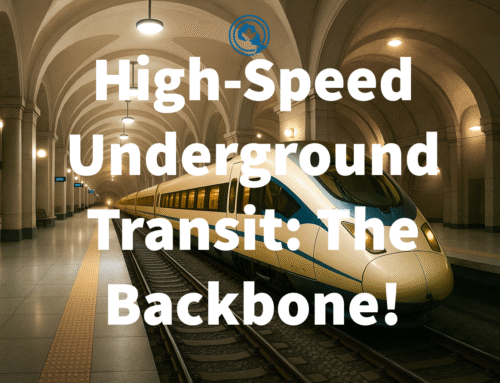The Commuter Surge Ahead
The Ontario government has announced that by 2026, all provincial civil servants will return to their workplaces full-time. After years of hybrid and work-from-home flexibility, this decision marks a significant shift in how thousands of Ontarians will commute every day.
On the surface, this may look like a simple workplace policy. But in reality, it’s a decision with enormous implications for Ontario’s already overstretched transportation system. More cars on highways, more pressure on already crowded subway lines, and more demand for housing near urban job centers — all in a province that’s still struggling to modernize its infrastructure.
This is where the Ontario Connected vision comes in.
Why This Matters for Commuters
Highways like the 401, QEW, Gardiner Expressway, and Don Valley Parkway are already notorious for daily gridlock. The 401 alone is one of the busiest highways in North America, carrying upwards of 400,000 vehicles per day.
Now imagine adding tens of thousands of new commuters — many of them civil servants traveling into Toronto, Ottawa, and other urban centers. Even if only a fraction drive, the impact will be enormous.
Meanwhile, subway lines in Toronto are at capacity during peak hours. GO Transit helps, but service gaps, limited frequencies, and long travel times make it uncompetitive for many. In short: Ontario’s transportation network is already maxed out, and the 2026 back-to-office mandate will stretch it to the breaking point.
Why This Matters for Housing
Transit is not just about moving people. It’s also about where people can afford to live.
During the work-from-home era, many Ontarians moved farther away from urban cores, seeking affordable housing in communities like Barrie, Milton, Cambridge, Durham, and Niagara. These choices made sense when commuting was occasional. But with a return to daily commutes, the reality is changing.
If we don’t build the transit connections to match, these residents will face brutal commutes — or be forced back into overheated housing markets closer to Toronto. Either way, Ontarians lose.
Ontario Connected: The Long-Term Solution
Ontario Connected is built on a simple idea: dig deeper, connect better, plan smarter.
- Parallel subway tunnels beneath Toronto’s existing lines to relieve congestion and create express routes.
- High-speed intercity tunnels connecting cities like Hamilton, Kitchener-Waterloo, Barrie, Durham, and Ottawa to Toronto in a fraction of today’s travel time.
- Transit-linked hubs with affordable housing, retail, healthcare, and education facilities integrated directly with transit corridors.
- Sustainable infrastructure planning that preserves farmland and natural spaces by building downward and smarter.
This is not about dreaming of something futuristic — it’s about catching up to what leading cities worldwide have already done. London, Paris, Shanghai, and Tokyo have all invested in deep-level tunnels and rapid intercity links. If Ontario wants to stay competitive and livable, we must do the same.
Congestion = Economic Loss
Congestion isn’t just an annoyance. It’s an economic drain.
The Toronto Region Board of Trade estimates that traffic congestion costs the regional economy more than $11 billion every year in lost productivity, wasted fuel, and delays. That figure doesn’t include the rising costs of stress, environmental damage, and lost family time for commuters.
By forcing thousands of civil servants back into full-time commuting by 2026, the Ontario government is amplifying this problem. Without new transit investment, Ontario will bleed billions more in economic losses.
Why Building Now Matters
Transit mega projects are not built overnight. The Eglinton Crosstown has been delayed more than four years, and Ontario Line construction will take at least another decade. These are sobering reminders: if we wait until the 2026 crunch hits, it will already be too late.
Ontario Connected is a 50-year plan, but it emphasizes starting immediately. Relief tunnels, high-speed corridors, and regional hubs should begin planning now — so by the time the next wave of commuters arrives, Ontario isn’t paralyzed by congestion.
A Smarter Way Forward
The back-to-office mandate doesn’t have to spell disaster. It can be the wake-up call Ontario needs to take transit seriously. Instead of patching highways or tinkering with short-term fixes, we can commit to building a system that:
- Moves people efficiently across regions.
- Expands affordable housing opportunities.
- Protects green spaces and farmland.
- Supports a competitive, resilient economy.
Preparing for 2026 and Beyond
By 2026, thousands of Ontarians will once again join the morning rush. Highways will clog, subways will crowd, and frustrations will grow. But this doesn’t have to be our future.
Ontario Connected offers a way out — deeper tunnels, faster connections, smarter hubs, and a more sustainable vision for transit and housing. If we start now, we can ensure that Ontario’s future isn’t defined by congestion, but by connection.
Read more at Ontario Connected







Leave A Comment
You must be logged in to post a comment.